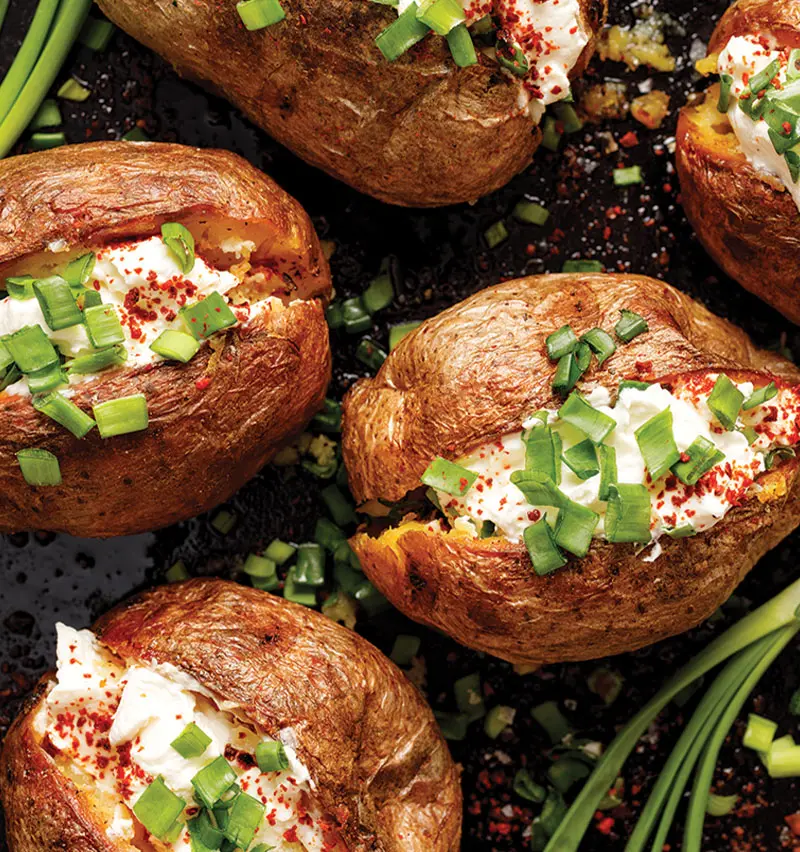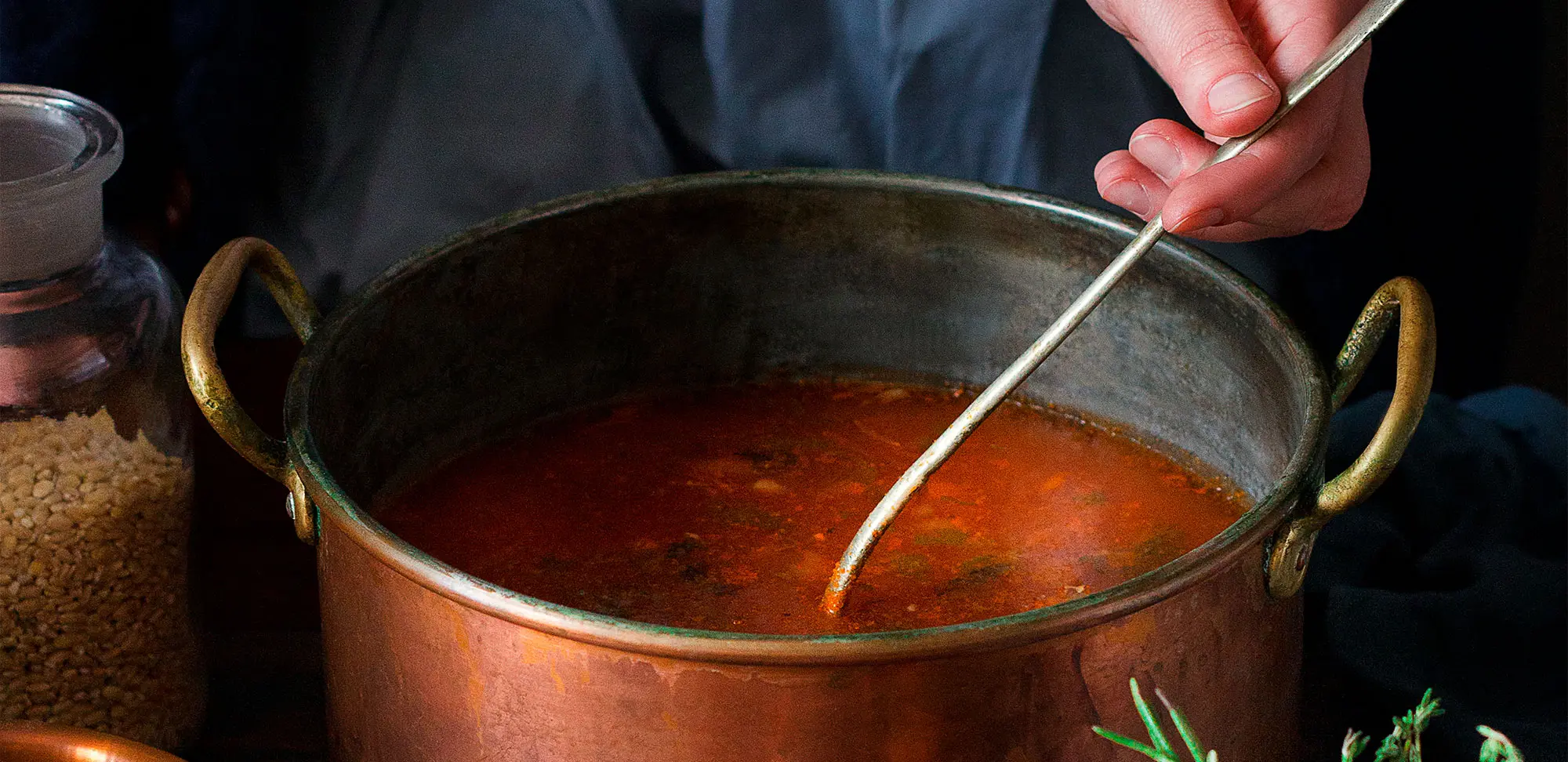ASPARAGUS, SPRING’S TREAT
An esteemed vegetable in ancient Greece and Rome, asparagus faded away with the fall of Rome, re-emerging in the 16th century to find a renewed audience in Europe and the British Isles. Asparagus, known to scientists as Asparagus officinalis but to British growers as sparrow grass, followed newcomers to Canada. Here it has always been special: often a luxury, much anticipated after a winter of roots and tubers, discussed at length, eaten with gusto and pleasure.
Is it fresh? Yes, if the stalks are firm and deep green fading to white at the cut ends. The tips are tight, dark green or purple. The best stalks are straight, and in a bunch; look for them to all be of similar thickness. It’s smart to harvest (buy) asparagus and enjoy it the same day. If that’s not possible, remove the elastic bands that hold the bunch.
Do not wash the asparagus until just before cooking. Some cooks like to wrap the stalks in a clean kitchen cloth and enclose in a plastic bag. Others are just as vehement about putting the spear bottoms in a jug of water; some wrap cut ends in damp towelling and enclose the asparagus in a reusable plastic bag. Refrigerate. Any stalks showing yellow or wrinkles aren’t worth eating.
Green or white? Green’s the top choice in Canada. Of the 3,500 acres given over to asparagus cultivation in the leading grower province, Ontario, only three acres produce the milder-flavoured less-grassy white asparagus. White is more labour intensive, as growers must hill soil over the asparagus plant to prevent light turning emerging stalks from white to green.
Thick or thin? It all depends. In the wild, the stalks were originally very skinny, but thick stalks got the nod, and growers cultivated increasingly stocky stalks. Nowadays, both are available. The thinner are often imported season-extenders; thumb-thick stalks are the pride of local growers. Use the thin for slicing into salads, soups and pasta, the thick for wrapping in prosciutto and grilling for a fine spring appetizer, stir frying with mushrooms and Parmesan, as a starter course with melted butter and lemon. Or Hollandaise. Or vinaigrette. For roasting and grilling, thick is the way to go.
Bottom line: It’s all asparagus, and that’s all good.
Peel or not to peel? The tried-and-true method of prepping asparagus is to snap or cut off the woody white ends. Peeling asparagus has often seemed a little too “cheffy” for everyday, but with a two-blade peeler or sharp one-blade peeler you use for carrots, you will have asparagus that cooks quickly and evenly. And looks rather pretty. Reduce cooking times for peeled spears.
Some basics: How much to buy? As a side, count on 1/4 lb (125 g) per serving; when asparagus is the star of the meal, go up to 1/2 lb (250 g).
Immersed in a deep skillet of boiling water, or in a steamer, 2 to 3 minutes for the thin ones, 4 to 6 for thick. But whatever method, be ready to drain the asparagus or remove from the heat when it reaches the tender-crisp stage.
If serving asparagus hot, get it to the table on warmed plates PDQ. If serving asparagus cold, immediately plunge the stalks in a basin of icy cold water. As soon as they’re cold, remove from the water and pat dry.
Try something new: How easy it is to roast a sheet pan of asparagus. A drizzle of olive oil, freshly ground pepper and a pinch of salt are all you need, and 8 minutes in a 375°F (190°C) oven does the rest.
- Quick tricks: Sauté in a skillet with garlic and olive oil or butter. Add a touch of stock or white wine vinegar, cover and steam a couple of minutes to finish.
- Serve cold with a vinaigrette featuring Dijon mustard and lemon juice.
- Serve hot with toasted sesame seeds, a drizzle of dark sesame oil and a splash of Japanese soy sauce.
Steam or boil spears; drain and drizzle them with olive oil, a splash of lemon juice, minced garlic if you like, and freshly grated Parmesan, Grana Padano or Asiago.
SPRING FRITTATA WITH PAN-ROASTED CHERRY TOMATOES
Supper on a Tuesday night, just the time in the week for a quick and easy meal — all you need to add is a salad and toasted whole grain bagels. What makes this frittata special? Aside from the freshest of eggs and spring herbs is the addition of a pan-roasted cherry tomato sauce spooned over the frittata — as easy on the eyes as it is pleasing to eat. Bonus: Use up leftovers such as potatoes or short pasta — your planned-overs!

Pan-roasted cherry tomato sauce
2 tbsp (30 mL) extra virgin olive oil, approximate
2 large cloves garlic, thinly sliced 1 ½ cups (375 mL) red cherry or grape tomatoes
¼ tsp (1 mL) each salt and pepper 2 tbsp (30 mL) minced parsley
Frittata
1 tbsp (15 mL) extra virgin olive oil
1 onion, halved and thinly sliced crosswise
½ cup (125 mL) diced orange or yellow bell pepper
1 tbsp (15 mL) chopped fresh thyme or oregano, or 1 tsp (5 mL) dried
½ tsp (2 mL) salt
¼ tsp (1 mL) pepper
2 cups (500 mL) cubed cooked potato or 1 ½ cups (375 mL) cooked short pasta such as rigatoni
6 large eggs
½ cup (125 mL) crumbled feta cheese
Sauce: In a skillet or shallow pan, heat the oil over medium-low heat. Stir in the garlic and let soften slightly without browning, about 3 minutes. Add tomatoes, salt and pepper, stirring to combine the flavours. Cook gently, stirring from time to time until the tomatoes start to wrinkle and soften. Mix in the parsley. Remove from the heat and set aside. Reheat to serve, adding a splash more of olive oil if needed to loosen the sauce.
Frittata: In a 9-inch (23-cm) non-stick skillet, heat the oil over medium-low heat. Stir in the onion, bell pepper, thyme, salt and pepper. Fry gently until softened, about 4 minutes. Increase heat to medium and stir in the potatoes. Cook just long enough to heat and crisp the potatoes, but without browning the onion mixture.
In a deep bowl, whisk the eggs; pour over the potato mixture. Stir once to combine eggs and vegetables. Let the frittata firm up along the bottom and up the sides of the pan, about 3 minutes. The top will still be jiggly. Sprinkle feta over the top and broil just long enough to firm up the top, about 4 minutes. Cut into 6 wedges. Spoon the sauce over the top of the frittata and serve from the skillet. Makes 2 to 3 servings.
Tip: Leftovers? Wrap up what’s left and enjoy for breakfast or lunch — as is, or warm and tucked into a sandwich.
FROM SIDE TO MAIN
It starts like a side dish — a plain but fluffy baked potato — but ends up fully loaded or stuffed, with seasonings, cheese and sour cream, and moves to centre plate as a main. Stuffed potatoes are well suited for solo suppers; simply multiply for more servings.

It all begins with starter spud:
1 oval russet potato, about 8 oz (250 g)
¼ cup (60 mL) sour cream
2 tsp (10 mL) butter
½ cup (125 mL) shredded old cheddar cheese or aged Gouda, divided
1 green onion, thinly sliced
2 tbsp (30 mL) diced red bell pepper
½ tsp (2 mL) chopped fresh sage or thyme, or ¼ tsp (1 mL) dried Pinch each salt and pepper
2 slices cooked bacon, crumbled, or ¼ cup (60 mL) bacon bits, diced ham or smoked turkey
Preheat the oven or toaster oven to 400°F (200°C). Scrub the potato, then puncture in 4 places with a skewer. Set on an ovenproof pan and bake until soft when pinched and a skewer inserted into the middle of the potato goes in and out without resistance, about 1 hour.
Wearing oven mitts, cut potato in half lengthwise. Scoop potato flesh into a bowl, leaving a thin coating attached to the shells. Mash the flesh until smooth. Mash in the sour cream and butter, half of the cheddar, the green onion, bell pepper, sage and salt and pepper. Spoon a quarter of the potato mixture into each of the potato shells; top each with a quarter of the bacon. Press in remaining potato mixture, doming and smoothing the top. Cover with remaining bacon and cheddar.
Makes 1 generous main serving, 2 sides if you must.
Variations:
- Instead of bacon: Layer ¼ cup (60 mL) chopped cold-smoked salmon or 1/2 cup (125 mL) hot-smoked salmon, trout or canned tuna between the potato layers. Dill is nice with fish.
- With an Italian touch: Pack each shell with 1 quarter of potato filling. Overtop, layer 2 to 4 chopped marinated artichoke hearts, 2 tbsp (30 mL) extra red bell pepper and 2 tbsp (30 mL) diced pitted black olives. Top with remaining potato filling. Make the cheese mozzarella and let oregano replace the sage.
- Vegetarian: Omit the bacon, replace the cheddar with shredded provolone or Gruyère and make the middle layer roasted cherry tomatoes or roasted peppers with shredded basil or parsley. No need for sage.
Spoon Overs can also turn baked potato sides into mains. Simply cut the top of the baked potato lengthwise and squeeze up the soft potato flesh into peaks and valleys. Spoon on:
- Baked beans and a little cheddar. Broil if desired.
- Ditto with chili and shredded Monterey Jack.
- Pasta sauces: tomato with basil or chick peas, or tomato and eggplant (pasta alla Norma), meaty sauces with ground meat, sausages, meatballs. Aged provolone or mozzarella. Broil if you like.
- Indian chicken or vegetable curries, Greek yogurt topping and minced fresh cilantro.
Tip: A toaster or other small oven is ideal for baking potatoes.
SUPER SIMPLE SAUSAGE SUPPER
This recipe, a household favourite, calls for a variety of vegetables, cooked one-pot style with full-flavoured sausage. You will need 4 to 5 cups (1 to 1.25 L) of long-cooking vegetables: carrots or parsnips, onions and potatoes, the last few radishes — yes, radishes! — a wedge of fennel bulb, cubed butternut squash and turnips. Last-minute additions, quick-cooking vegetables: a generous cupful of spinach, chard, green beans or small broccoli florets. Don’t forget frozen peas. This list is only a starting point — mix, match and stir in your favourites.

1 cup (250 mL) vegetable stock or water, approximate
2 lean mild Italian or farmer’s sausages, about ¾ lb (375 g), in 1 ½-inch (4-cm) pieces
4 to 5 cups (1 to 1.25 L) long-cooking vegetables, see below
1 tbsp (15 mL) chopped fresh thyme, oregano or sage, or 1 tsp (5 mL) dried
½ tsp (2 mL) salt
¼ tsp (1 mL) pepper
1 cup (250 mL) or more quick-cooking vegetables, see below
2 green onions, thinly sliced
¼ cup (60 mL) minced parsley
Long-cooking vegetables:
All vegetables are washed and, with the exception of potatoes, peeled. Cut the carrots, parsnips, potatoes and squash into generous chunks, the onion into 6 wedges. Halve the radishes. Cut the turnips into 3/4-inch (2-cm) cubes.
Quick-cooking vegetables:
Wash and trim selected vegetables. Only 1 cup (250 mL)? Go ahead, add a little more — you’ll like this touch of freshness.
Pour ¼ cup (60 mL) of the stock into a 4-litre saucepan. Add the sausages and cover. Over medium heat, cook the sausages, stirring occasionally, until the stock has evaporated, the sausages are browning and a little fat has been rendered, about 5 minutes.
Drain off any fat; deglaze the pan with the remaining water. Add the long-cooking vegetables, the thyme, salt and pepper and toss to season evenly. Simmer, covered, until the vegetables are fork tender and the stock is only about ¼-inch (6-mm) deep, moving and turning the vegetables and sausage as needed, about 15 minutes. Adjust the heat and add a little more stock if needed to prevent over-browning.
Nestle the quick-cooking vegetables among the sausage and other vegetables; cover and cook until tender and remaining stock has reduced. Ideally, there will be enough liquid to drizzle over the vegetables. Serve with sliced green onions, parsley and the pan drippings over the top.
Makes 2 generous servings. For 4 servings, double the ingredients, increasing the simmering time to make up for the larger quantity of vegetables.










